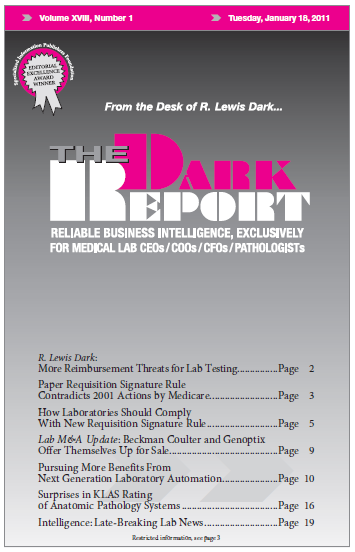CEO SUMMARY: Across the nation, clinical laboratories and pathology groups are reacting to the new Medicare rule that requires a physician signature on a paper requisition for clinical laboratory tests. Laboratories using paper requisitions will need to add a signature line, then print and distribute these new requisitions to their clients. Pathologists and lab administrators …
How Labs Should Comply With New Signature Rule Read More »
To access this post, you must purchase The Dark Report.


